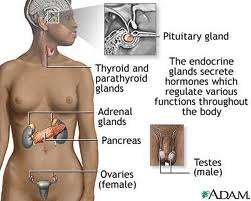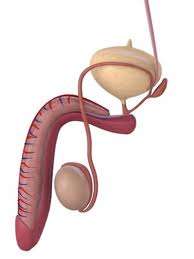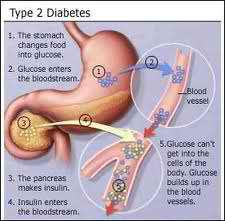Diabetes Insipidus

Definition
Diabetes insipidus (DI) is a disorder that causes the patient to produce tremendous quantities of urine. The massively increased urine output is usually accompanied by intense thirst.
Description
The balance of fluid within the body is maintained through a number of mechanisms. One important chemical involved in fluid balance is called antidiuretic hormone (ADH). ADH is produced by the pituitary, a small gland located at the base of the brain. In a healthy person and under normal conditions, ADH is continuously released. ADH influences the amount of fluid that the kidneys reabsorb into the circulatory system and the amount of fluid that the kidneys pass out of the body in the form of urine.
Production of ADH is regulated by the osmolality of the circulating blood. Osmolality refers to the concentration of dissolved chemicals (such as sodium, potassium, and chloride; together called solute) circulating in the fluid base of the blood (plasma). When there is very little fluid compared to the concentration of solute, the pituitary will increase ADH production. This tells the kidneys to retain more water and to decrease the amount of urine produced. As fluid is retained, the concentration of solute will normalize. At other times, when the fluid content of the blood is high in comparison to the concentration of solute, ADH production will decrease. The kidneys are then free to pass an increased amount of fluid out of the body in the urine. Again, this will allow the plasma osmolality to return to normal.
Diabetes insipidus occurs when either the amount of ADH produced by the pituitary is below normal (central DI), or the kidneys’ ability to respond to ADH is defective (nephrogenic DI). In either case, a person with DI will pass extraordinarily large quantities of urine, sometimes reaching 10 or more liters each day. At the same time, the patient’s blood will be very highly concentrated, with low fluid volume and high concentrations of solute.
DI occurs on average when a person is about 24 years old, and occurs more frequently in males than in females.
Causes and symptoms
DI may run in families. The cause of this type of DI is unknown. Other times, central DI can be caused by:
an injury to the head
brain surgery
cancers that have spread to the pituitary gland (most commonly occurring with breast cancer)
sarcoidosis (or other related disorders), causing destruction of the pituitary gland
any condition or illness that causes decreased oxygen delivery to the brain
the use of certain medications that decrease ADH production (like the antiseizure drug phenytoin)
the excessive use of alcohol
Central DI may also occur in women who are pregnant or have just given birth, and in patients with AIDS who have suffered certain types of brain infections. Nephrogenic DI sometimes occurs in patients who are taking the medication lithium, patients who have high levels of blood calcium, and patients who are pregnant.
DI is easily confused with an entirely unrelated disorder, psychogenic polydipsia. Polydipsia refers to drinking large amounts of water. Psychogenic polydipsia is a psychiatric problem that makes a person drink huge quantities of water uncontrollably.
Symptoms of DI include extreme thirst and the production of tremendous quantities of urine. Patients with DI typically drink huge amounts of water, and usually report a specific craving for cold water. When the amount of water passed in the urine exceeds the patient’s ability to drink ample replacement water, the patient may begin to suffer from symptoms of dehydration. These symptoms include weakness, fatigue, fever, low blood pressure, increased heart rate, dizziness, and confusion. If left untreated, the patient could lapse into unconsciousness and die.
Diagnosis
Diagnosis should be suspected in any patient with sudden increased thirst and urination. Laboratory examination of urine will reveal very dilute urine, made up mostly of water with no solute. Examination of the blood will reveal very concentrated blood, high in solute and low in fluid volume.
A water deprivation test may be performed. This test requires a patient to stop all fluid intake. The patient is weighed just before the test begins, and urine is collected and examined hourly. The test is stopped when:
the patient has lost more than 5% of his or her original body weight
the patient has reached certain limits of low blood pressure and increased heart rate
the urine is no longer changing significantly from one sample to the next in terms of solute concentration.
The next step of the test involves injecting a synthetic form of ADH, with one last urine sample examined 60 minutes later. Comparing plasma and urine osmolality allows the doctor to diagnose either central DI, nephrogenic DI, partial DI, or psychogenic polydipsia.
Treatment
A number of medications can be given to decrease the quantity of fluid passed out into the urine. These include rasoprassin (Pitressin) injected and desmopressin acetate (DDAVP) inhaled through the nose. Other medications that may be given include some antidiuretic drugs (chlorpropamide, clofibrate, carbamazepine). Patients with nephrogenic DI, however, will also require special diets that restrict the amount of solute taken in. These patients are also treated with a type of medication called a thiazide diuretic.
Prognosis
Uncomplicated diabetes insipidus is controllable with adequate intake of water and most patients can lead normal lives.
Key terms
Concentration — Refers to the amount of solute present in a solution, compared to the total amount of solvent.
Dilute — A solution that has comparatively more fluid in it, relative to the quantity of solute.
Osmolality — A measure of the solute-to-solvent concentration of a solution.
Solute — Solid substances that are dissolved in liquid in order to make a solution.
Resources
Periodicals
Singer, Irwin, et al. “The Management of Diabetes Insipidus in Adults.” Archives of Internal Medicine 157, no. 12 (June 23, 1997): 1293+.
Gale Encyclopedia of Medicine. Copyright 2008 The Gale Group, Inc. All rights reserved.
thefreedictionary.com/







